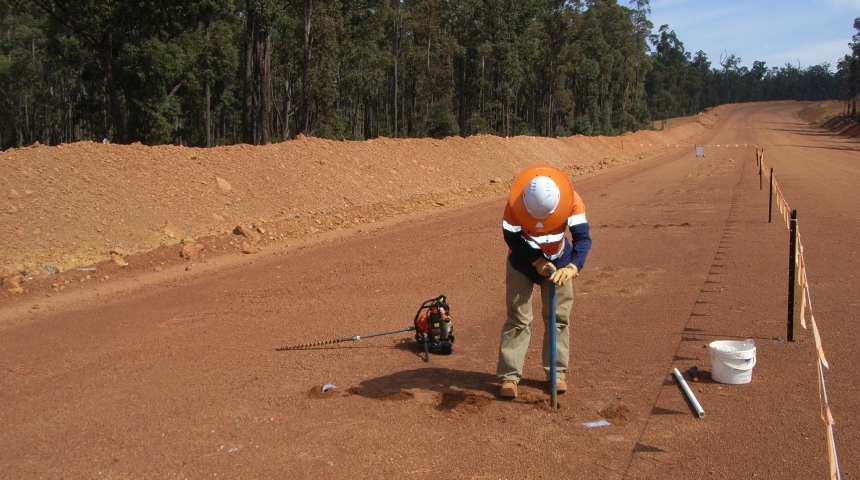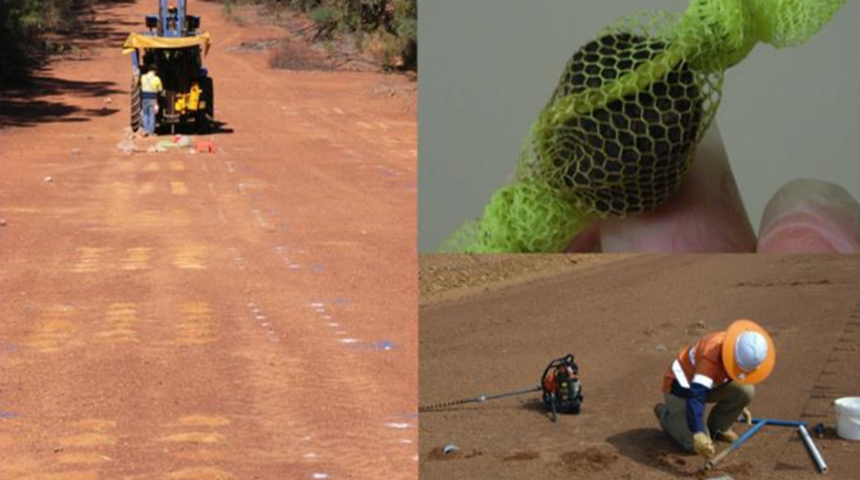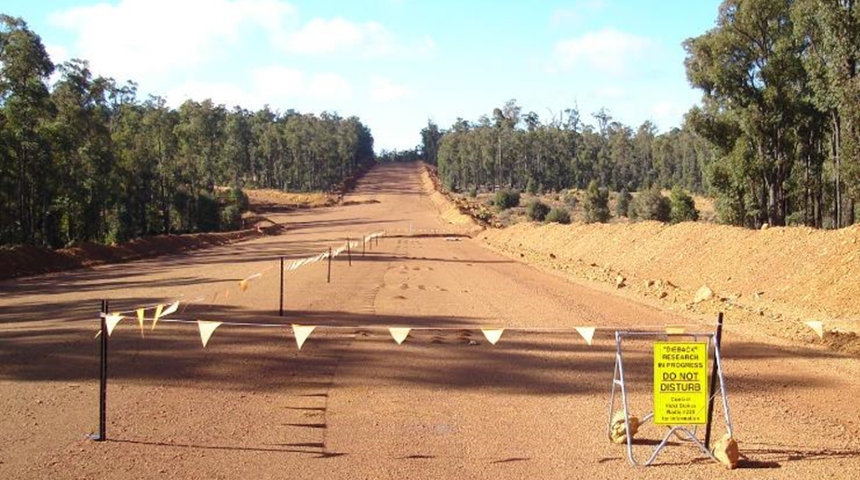
Researchers at the Harry Butler Institute have discovered how to eradicate one of the biggest threats facing our native bush; dieback.
Dieback is a plant disease caused by an introduced soil microorganism – Phytophthora cinnamomi – which kills roots, resulting in rapid plant death, or a slow decline in health with symptoms seen as progressive canopy dieback.It’s a major threat to Australia’s unique biodiversity and listed as one of the world’s 100 worst invasive alien species by the International Union for Conservation of Nature, and a ‘Key threatening process to Australia’s biodiversity’ by the Environment Protection and Biodiversity Conservation Act 1999.
More than one million hectares of native bush are infected in the south-west of Western Australia alone.
“Phytophthora really is a ‘biological bulldozer’,” said Professor Giles Hardy. “You can be in Banksia woodland or heath thick enough to make walking through difficult. But once Phytophthora has killed numerous susceptible plant species, you can play a game of golf.”
One of the major challenges in controlling the pathogen is detection. It's not easily identified as the symptoms are similar to a plant dying from drought.
Now, researchers at the Harry Butler Institute, in partnership with Alcoa in Australia together with funding from the Australian Research Council’s Linkage Scheme, have shown how it can be eradicated.
While there is no known cure for dieback, many years of work into the biology and ecology of the pathogen has resulted in methods that can be used to eradicate Phytophthora from infested areas, such as the jarrah forest in Western Australia where Alcoa operates its mines.
The development presents an important opportunity for sectors including forestry, natural resource management, mining and horticulture, that currently face significant financial costs managing the disease.
Developing effective strategies for eradication
“We investigated the effect of soil moisture and temperature, at different depths, in different soil conditions, on the survival of Phytophthora cinnamomi,” explained Professor Treena Burgess, one of the authors of the new research.“We also explored the impact of removing all living plant material for up to three years.
“By combining this fallow approach together with exposure to high summer soil temperatures, a rapid reduction in the percentage recovery of Phytophthora cinnamomi was seen in infected samples installed into mine haul roads, leading to complete eradication of the pathogen within 12 months.
 Image caption: Custom techniques were developed to install and then retrieve deliberately infected plugs of dieback inoculum (top right) into haul roads to monitor the duration of survival of the pathogen.
Image caption: Custom techniques were developed to install and then retrieve deliberately infected plugs of dieback inoculum (top right) into haul roads to monitor the duration of survival of the pathogen. “Declines in recovery from infected soil samples installed into bunds and topsoil stockpiles were also observed; however, further studies are required to improve our understanding of the fallow process in these environments to ensure effective eradication.”
Professor Hardy said the findings from the research have national economic, environmental and social benefits as a reduction of areas infested with dieback will improve the quality, biodiversity and resilience of restored ecosystems.
“Potentially, areas to be restored, such as mine sites which were infested by the pathogen prior to mining, can be returned to pathogen-free through the process developed,” said Professor Hardy.
“For Alcoa, there may opportunities to use infested gravels for haul roads while being confident in the ability to return the road to pathogen-free prior to rehabilitating back to jarrah forest.”
The culmination of decades-long research
The research team has been developing strategies to limit the spread of Phytophthora since the early 1990s, with a focus on minimising its transmission by human activities.Their recommended quarantine, hygiene and work practices are now preventing the transport of infected soil and water across south-west Western Australia, and also worldwide.
 Image caption: Alcoa’s Huntly bauxite mine haul roads, and many like them, run through both dieback-free and dieback-affected parts of the jarrah forest.
Image caption: Alcoa’s Huntly bauxite mine haul roads, and many like them, run through both dieback-free and dieback-affected parts of the jarrah forest.The research has also been able to provide companies access to areas they may not have otherwise been able to mine, improved their rehabilitation records and helped maintain their social license to operate.
“The savings to industries across Australia runs into hundreds of millions of dollars, and preserving healthy ecosystems is priceless. For example, other mining companies and even Main Roads are trialling the approach we have developed,” said Professor Hardy of the results to date.
---
The research paper is in memory of Dr. Ian Colquhoun (I.C.) who passed away in 2015. He was a huge advocate of Phytophthora science and management in Australia for over 25 years. He worked tirelessly with industry, universities, government and non‐government agencies, and community groups.
His ability to bring people together to achieve common goals aimed at the management of Phytophthora was legendary. He was a primary instigator of the research outlined in this paper, both in the research objectives and obtaining funding support. He is fondly remembered by many friends he made across Australia and worldwide.
Learn more about the important research of the Harry Butler Institute.